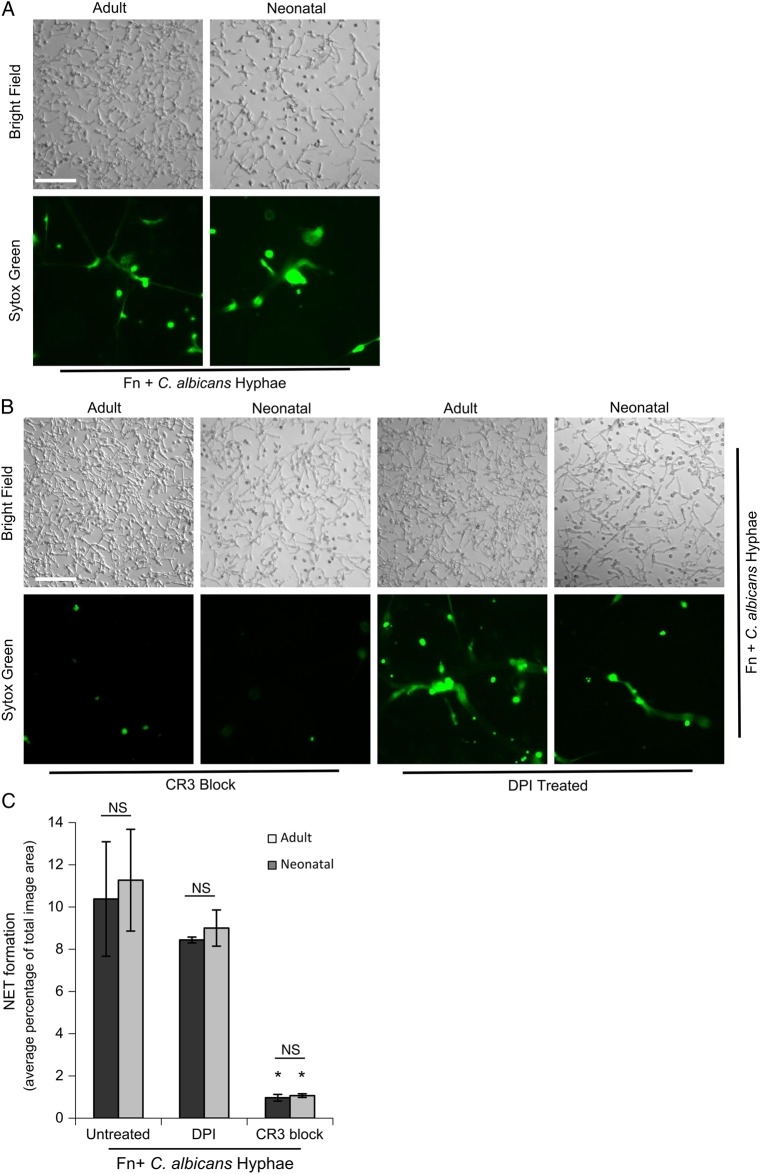Figure 2.
Neonatal neutrophils form CR3-mediated clusters and rapid NETs in response to Candida albicans hyphae in the context of fibronectin (Fn), which is independent of respiratory burst. Neonatal neutrophils form aggregates and NETs in response to C. albicans hyphae elaborated on Fn. A, Micrographs show adult and neonatal polymorphonuclear leukocytes (PMNs) that were adhered to wells precoated with 10 µg/mL Fn, upon which C. albicans hyphae were grown. PMNs were pretreated with 10−9 M fMLF and 1 mM Mn+2 before adding cells to the coated wells and incubating for 30 minutes at 37°C. Data represent at least 5 independent experiments done using neutrophils from different individual donors. All images were obtained at 20× original magnification (bar, 100 µm). B, Adult and neonatal PMNs prepared as described above were pretreated with CR3-blocking monoclonal antibody (clone 44abc; left columns) or the respiratory burst inhibitor DPI (right columns) before they were adhered to wells coated with Fn and hyphae, as described above, and incubated at 37°C for 30 minutes. Images were obtained at 20× original magnification (bar, 100 µm). These results represent at least 4 independent experiments performed using neutrophils from different individual donors. C, Quantification of NET formation as the percentage of the total imaged field. Data represent 4–20 wells per condition. Error bars represent standard errors of the mean. *P < .01 vs both untreated PMNs and PMNs treated with DPI. Abbreviation: NS, nonsignificant.

